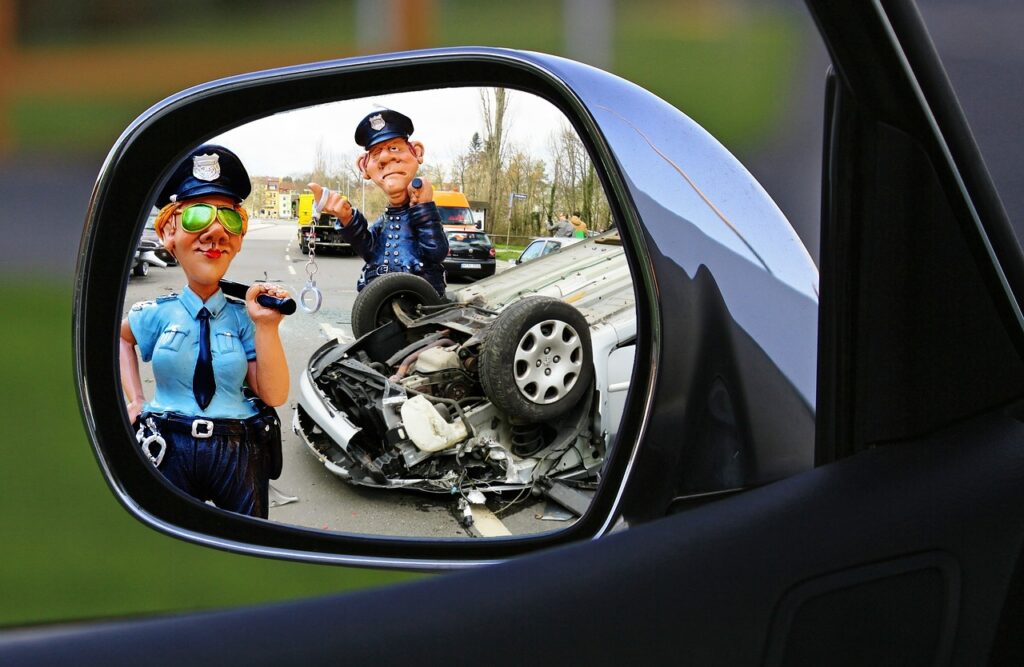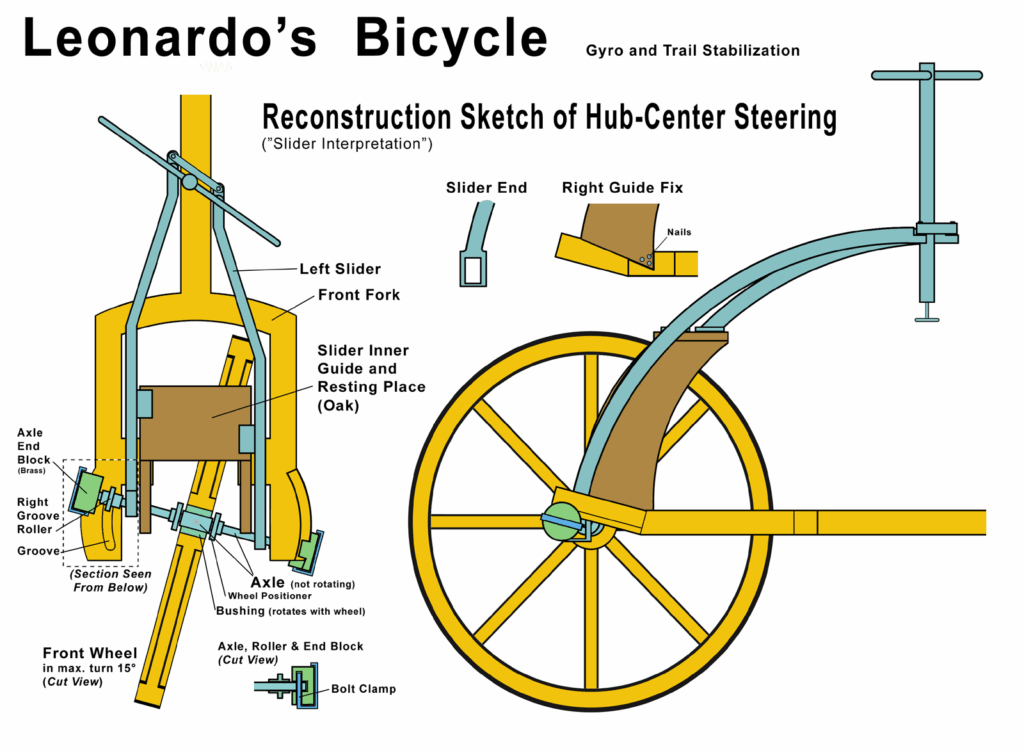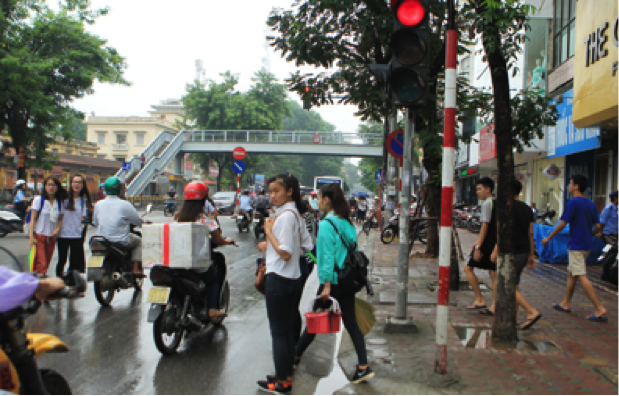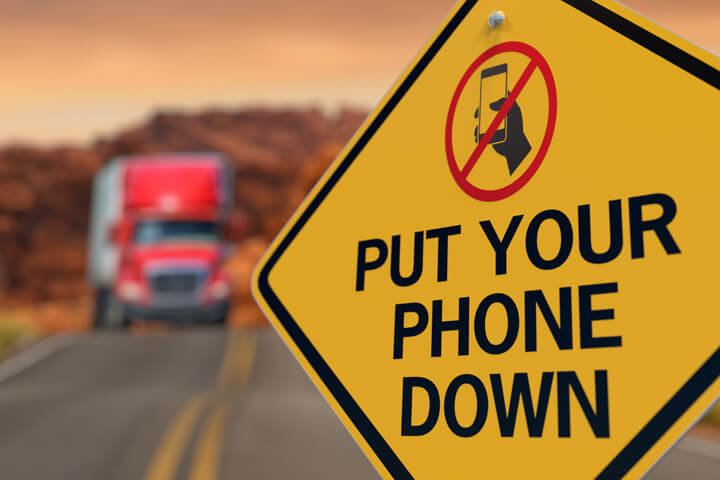
Driving is an activity many engage in daily, yet the pursuit of continuous improvement behind the wheel is often overlooked. While most drivers feel confident, the road environment is dynamic, demanding constant vigilance and adaptive skills. The distinction between an adequate driver and a truly excellent one often lies in the consistent application of specific, well-honed habits. These practices enhance safety, reduce stress, and can even save money on maintenance and fuel.
Becoming a better driver is not about high-risk maneuvers but about cultivating a predictable, responsible, and highly aware approach to every journey. It involves integrating foundational techniques, developing advanced observational skills, and maintaining a disciplined mindset. Expert driving instructor Simon Miyerov, for instance, stresses maintaining an ample cushion of space and actively scanning surroundings. This guide, compiled from expert advice, aims to transform your driving by detailing key habits to refine your skills for a safer experience for all road users.
We will explore a series of crucial adjustments and practices that, when adopted consistently, will significantly elevate your driving proficiency. From optimizing your field of vision to mastering precise vehicle control, these habits address common pitfalls and introduce techniques foundational to defensive driving. By diligently applying these principles, you can navigate diverse road conditions with greater confidence and efficiency, ultimately making every drive a smoother, more secure experience. Let’s delve into the first seven indispensable habits that lay the groundwork for superior driving.

1. **Maintain a Safe Following Distance (4-second gap)**Maintaining an adequate cushion of space between your vehicle and the one in front is a critical defensive driving habit. Many drivers mistakenly rely on arbitrary measures like car-lengths, which are often insufficient depending on speed and conditions. Expert advice, including that from driving instructor Simon Miyerov, recommends a 4-second gap. This provides sufficient time to react to sudden stops or hazards, inherently adjusting for varying speeds where a 4-second count naturally covers a greater distance.
To implement the 4-second window, select a fixed object on the road ahead, such as a sign or bridge. As the vehicle in front passes that object, begin counting “one thousand one, one thousand two, one thousand three, one thousand four.” If your vehicle reaches the same object before you finish counting, you are following too closely and should increase your distance. This technique ensures you have the necessary reaction time to brake safely or maneuver, drastically reducing the risk of rear-end collisions.
In adverse weather conditions, such as rain, snow, or fog, or on slippery surfaces, this following distance must be extended even further. Wet or icy roads significantly increase stopping distances, making a 4-second gap the absolute minimum. Doubling or even tripling this interval accounts for reduced traction and visibility, providing an essential safety buffer. Prioritizing this habit fosters a proactive rather than reactive driving style, allowing you to anticipate and respond to evolving traffic situations with greater control.

2. **Adjust Your Mirrors for Optimal Field of Vision**Many drivers unknowingly compromise their field of vision by incorrectly adjusting their vehicle’s mirrors. A common error involves setting side mirrors to show a portion of the vehicle’s side, which creates unnecessary overlap with the rearview mirror’s view. This redundant coverage wastes valuable mirror real estate and fails to maximize visibility, potentially leaving critical blind spots unaddressed. Proper mirror adjustment is a fundamental step in enhancing situational awareness and mitigating accident risks, especially when changing lanes.
For the passenger-side mirror, lean your head over the center console, aligning it directly with the rearview mirror. From this position, adjust the passenger-side mirror so you barely see the edge of your vehicle. This outward adjustment significantly expands the view of the lanes beside you. Similarly, for the driver’s side mirror, place your cheek against the driver’s side window and adjust that mirror until you just lose sight of your vehicle’s side.
The rearview mirror should be adjusted while sitting upright, providing a clear and comprehensive view of the area directly behind your vehicle. By adopting these precise adjustments, drivers maximize their panoramic view around the vehicle, minimizing overlap and expanding their ability to perceive surrounding traffic. This enhanced field of vision makes lane changes safer and reduces the effort required for head checks, allowing for more consistent attention to the road ahead.
Read more about: Mastering the Squeeze: Your Ultimate Guide to Parking in Tight Spaces Like a Pro

3. **Actively Scan Your Surroundings (Head on a Swivel)**It is easy to fall into the habit of simply following the vehicle directly in front, allowing one’s focus to narrow. However, truly effective driving demands a broader, more active engagement with the entire road environment. Keeping your “head on a swivel” means continuously scanning your surroundings, rather than fixating on a single point or vehicle. This practice ensures you are actively tracking everything happening around you, preparing you to react to unexpected events from any direction.
This active scanning involves a systematic visual sweep of the landscape every 5-10 seconds. Your gaze should move from the road directly ahead, to your left and right mirrors, and then to your rearview mirror, before returning to the front. This cyclical process builds a continuous mental image of the traffic flow and potential hazards around your vehicle. It prevents tunnel vision and ensures that you remain engaged, preventing mental fatigue and allowing you to spot developing situations well in advance.
On long, open stretches of highway, the temptation to relax vigilance can be strong. Even here, it is crucial to scan the road as far as you can see, rather than just focusing on the car directly ahead. This allows you to identify potential problems like sudden slowdowns, debris, or merging traffic much earlier, giving you ample time to adjust your speed or position. Cultivating this habit transforms you from a passive follower to an active participant in the driving environment.

4. **Utilize the Rearview Mirror’s Dimmer Switch**A surprisingly underutilized feature in many vehicles is the small flip tab or button located on the rearview mirror, which serves as a dimmer switch. Many drivers are unaware that this component offers a significant advantage for night driving. In low-light conditions, the bright headlights of vehicles behind you can cause considerable glare in your rearview mirror, leading to discomfort, reduced visibility, and even temporary blindness. This simple switch is designed to mitigate that exact problem, enhancing your safety and comfort after dark.
Engaging this dimmer switch adjusts the angle of the mirror’s reflective surface, effectively softening the intensity of incoming light from trailing vehicles. This reduction in glare allows you to maintain a clear view of the traffic behind you without being overwhelmed. While some newer vehicles integrate this function into an automatic dimming system, many cars still rely on the manual tab. Typically, you push or pull this tab to toggle between the standard and dimmed settings.
Mastering the use of this feature can significantly improve your night driving experience. By reducing eye strain and maintaining better rearward visibility, you become a much more capable and safer driver in challenging low-light conditions. It’s a small, effortless action that yields substantial benefits, allowing you to react more effectively to the road ahead and behind, rather than squinting or being disoriented by harsh reflections. Incorporating this into your routine for night drives is a straightforward step towards better safety.
Read more about: Unlocking Your Driving Potential: 15 Expert-Backed Tricks to Become a Sharper, Safer Driver Today

5. **Master Mirror Checks Before Lane Changes**Changing lanes is a maneuver that carries inherent risks, particularly if executed without thorough observation. A common and dangerous habit is to turn the head abruptly to check blind spots, momentarily diverting critical attention from the road ahead. An improved approach involves a systematic sequence of mirror checks followed by a quick, decisive head turn. This method allows for a comprehensive assessment of surrounding traffic without prolonged periods of looking away from the primary direction of travel.
Before initiating a lane change, activate your turn signal to communicate your intentions to other drivers. Immediately after signaling, conduct a rapid scan of all three mirrors: the rearview, followed by the side mirror corresponding to the direction of your intended lane change, and then the opposite side mirror. This sequence helps you build a detailed mental map of the vehicles around you, identifying potential openings and confirming the absence of obstacles. This initial mirror check significantly reduces the need for an extended head turn, minimizing the time your eyes are off the road ahead.
Once you have assessed the situation using your mirrors and identified a clear path, execute a quick, brief glance over your shoulder into the blind spot on the side you intend to move. This “super quick turn” confirms that no vehicle is lurking in the area not covered by your mirrors. By prioritizing mirror checks, you spend less time with your head twisted around, maintaining forward awareness. This disciplined process ensures that lane changes are executed with precision and maximal safety, preventing common sideswipe collisions.
Read more about: Navigating Rainy Roads: Identifying and Avoiding the Most Common Driving Mistakes

6. **Correct Steering for Left Turns**A widespread and potentially dangerous habit observed in many drivers concerns the positioning of the steering wheel while waiting to make a left turn, especially at intersections. Often, drivers will prematurely turn their steering wheel slightly to the left while stationary in the turn lane, anticipating the impending maneuver. This seemingly innocuous action, however, harbors significant safety implications that can be easily overlooked until a critical situation arises. The correct technique is to keep your wheels pointed straight until the exact moment you begin to initiate the turn.
The primary hazard associated with pre-turning your wheels lies in the event of a rear-end collision. If your vehicle is struck from behind while its front wheels are already angled to the left, the impact will propel your car directly into oncoming traffic in the perpendicular lane. This scenario dramatically elevates the risk of a severe, multi-vehicle accident. By keeping your wheels straight, any rear impact will push your vehicle forward in a straight line, reducing the likelihood of veering into the path of other vehicles and offering a greater chance of controlled deceleration.
Furthermore, prematurely turning the wheel can sometimes lead to an overcorrection once the turn is initiated, causing the vehicle to swing too wide or too sharply. This can result in inadvertently entering the right-hand lane of the cross street, which is often inefficient and, in many jurisdictions, illegal. Maintaining straight wheels until the precise moment of turning allows for a smoother, more controlled, and safer execution of the left turn, ensuring you maintain your intended path and avoid unnecessary risks to yourself and other road users.
Read more about: Unlocking Your Ride: 14 ‘Secret’ Car Features Most Drivers Don’t Know About

7. **Focus Your Eyes on Your Target in Tight Situations**When faced with unexpected vehicle movements, such as a skid, a slide, or even navigating a challenging curve, human instinct often directs our gaze to the immediate danger or the direction the vehicle is momentarily facing. This natural reaction can be counterproductive. Instead, a highly effective technique for regaining control and navigating complex scenarios is to “pin your eyes on your target,” meaning you should focus intently on where you want the vehicle to go, rather than on where it currently is or how the steering wheel is oriented.
This principle is rooted in the intuitive connection between your visual focus and your body’s motor responses. When your eyes are fixed on your desired exit point—be it the clear patch of road ahead, the safe lane, or the intended path through a curve—your brain subconsciously guides your hands and feet to make the necessary adjustments. You will instinctively feel whether your vehicle is moving towards your focal point and will adjust the steering wheel accordingly, based on the sensory feedback you receive as the vehicle responds. This is particularly useful in dynamic situations where conscious thought might be too slow.
This technique extends beyond emergencies, proving beneficial on winding roads, navigating tight turns, or even when parallel parking. Instead of looking at the obstacles or the immediate angle of your vehicle, look to the clear space you aim to occupy. You already possess the inherent knowledge of how to operate a steering wheel; by providing a clear visual target, you empower your subconscious to execute the corrections more fluidly and effectively. This habit trains your mind to lead your vehicle, fostering a sense of control and precision even in the most demanding driving circumstances.
As we transition from immediate control to the broader spectrum of advanced defensive driving, strategic planning, and personal preparedness, we delve into the next set of essential habits that redefine what it means to be a truly superior driver. These practices move beyond reaction to proactive anticipation, emphasizing not just how you handle your vehicle, but also how you interact with the entire road ecosystem, maintain your equipment, and manage your own state of mind. By integrating these advanced techniques, you’ll not only enhance your safety but also contribute to a more efficient and harmonious driving environment for everyone.
Read more about: Navigate Crowded Parking Lots Like a Pro: Essential Strategies for Safe Backing and Avoiding Hidden Obstacles
8. **Anticipate the Moves of Drivers Around You**Being a skilled driver involves more than reacting to immediate circumstances; it requires predicting and preparing for what other drivers might do. This habit of anticipation transforms you from a reactive participant into a proactive observer, constantly gathering clues from the behavior of surrounding vehicles to intuit their intentions. It’s about reading the road and the drivers on it like an open book, allowing you to create a safer buffer around yourself and mitigate potential hazards before they fully materialize.
Consider a driver two lanes over who repeatedly switches lanes abruptly and tailgates. This behavior signals an aggressive and potentially reckless approach. By observing this, you can anticipate their desire to cut in front or make sudden maneuvers and proactively adjust your position to create more distance, avoiding entanglement in their unpredictable actions. Similarly, if the car ahead is consistently slowing down and speeding up, it’s a strong indicator of a distracted driver. Recognizing this, you can increase your following distance and maintain heightened alertness, ready to react to sudden changes in their speed or direction.
Drivers, whether they realize it or not, communicate their intentions through their actions on the road. Paying close attention to these signals — subtle swerves, braking patterns, or even a lack of signaling — empowers you to make informed decisions. While you cannot control the actions of others, you can certainly control your response to them. Cultivating this habit means constantly processing information about surrounding vehicles and using it to predict potential risks, ensuring you are always one step ahead.
Read more about: Buyer Beware: 12 SUV Models Plagued by Expensive, Post-Warranty Repairs
9. **Adopt Smooth Driving Mechanics**Driving should feel like a seamless, fluid experience, characterized by gentle transitions, not abrupt movements. Embracing smooth driving mechanics—gradual acceleration, controlled braking, and measured turns—is not merely about comfort; it is a cornerstone of both safety and vehicle longevity. This habit significantly reduces accident risks, particularly in adverse conditions, while simultaneously yielding substantial benefits for your wallet through reduced maintenance costs and improved fuel efficiency.
Unless an emergency dictates otherwise, strive for even acceleration when getting up to speed. Avoid sudden presses of the accelerator pedal that consume more fuel and put undue strain on your engine. Similarly, practice braking as gradually and gently as possible, anticipating stops well in advance. Observing traffic lights or upcoming curves allows you to lift your foot off the accelerator and coast, using engine braking to slow down before applying the brakes lightly. This technique is especially crucial in rain, snow, or on icy surfaces, where sudden braking can easily lead to skids and loss of control.
Furthermore, making smooth, deliberate turns rather than sharp, sudden movements provides greater stability and control, particularly when navigating curves or changing lanes. This measured approach also makes your intentions clearer to other drivers, giving them more time to react to your actions. By adopting these smooth mechanics, you protect your vehicle from unnecessary wear and tear on components like brakes and tires, and you enhance fuel economy by up to 30%, making every journey safer, more economical, and considerably more comfortable.
Read more about: Hidden Powerhouses: Unearthing 14 Underrated Pony Cars You Forgot Existed

10. **Master Parallel Parking**For many drivers, parallel parking remains a daunting, often avoided, maneuver. However, mastering this skill is not only a practical necessity in urban environments but also a testament to advanced vehicle control and spatial awareness. The ability to execute a precise parallel park efficiently and safely demonstrates a higher level of driving proficiency and confidence, eliminating the stress and frustration often associated with finding suitable parking spots.
To effectively conquer parallel parking, dedicated practice in a low-pressure environment is key. One highly effective method involves setting up two traffic cones in an empty lot, simulating the presence of other vehicles. Begin by pulling up parallel to the front cone, mimicking the position alongside a parked car. Then, slowly reverse to align with the imaginary vehicle’s passenger seat position.
From this position, turn your steering wheel entirely towards the curb and continue reversing slowly. As your vehicle angles into the space, monitor your mirrors and the cones. Once your rear curb-side wheel is approximately even with the front cone’s curb-side wheels (representing the rear of the car in front), begin to straighten out your wheels by turning the steering wheel in the opposite direction. Continue reversing, adjusting as needed, until your vehicle is parallel to the curb and evenly spaced between the two cones. Consistent repetition of this exercise will build muscle memory and intuitive understanding, transforming parallel parking from a challenge into a routine maneuver.
Read more about: The Revival Circuit: 12 Forgotten Concepts That Changed the Automotive Industry

11. **Strictly Adhere to Traffic Laws**At the core of responsible driving lies unwavering commitment to the rules of the road. While they may sometimes feel restrictive, traffic laws are fundamentally designed to ensure safety, maintain order, and facilitate the smooth flow of vehicles and pedestrians. Adhering to these regulations is not just a legal obligation but a moral imperative that protects yourself, your passengers, and every other road user. Disregarding them, even in seemingly minor ways, dramatically escalates the risk of accidents and serious consequences.
This habit encompasses several crucial behaviors. Always abide by the posted speed limit, regardless of how open or empty the road may appear. Speed limits are calculated based on road conditions, potential hazards, and stopping distances, and exceeding them severely compromises your ability to react and control your vehicle. Equally important is avoiding the temptation to “beat” a yellow light; instead, approach intersections with caution, prepared to stop. Pedestrians always have the right of way, and yielding to them is a fundamental safety principle that prevents severe injuries.
Furthermore, your turn signal is an indispensable communication tool. Make it an unbreakable habit to activate it well in advance before changing lanes or making any turn, even if you perceive no other vehicles nearby. This simple action clearly signals your intentions, preventing confusion and allowing other drivers to anticipate your movements. And, without exception, always wear your seatbelt. This single, effortless action is one of the most effective life-saving measures you can take every time you enter a vehicle. By rigorously following all traffic laws, you embody the essence of a safe and trustworthy driver, making the roads safer for everyone.
Read more about: Beyond the Badge: Uncovering the Hidden Flaws in 14 Fan-Favorite Vehicle Models

12. **Eliminate Driving Distractions**Distracted driving is one of the most perilous habits, unequivocally a leading cause of accidents worldwide. Diverting your attention, even for a split second, from the critical task of driving can have catastrophic consequences. Whether it’s a phone screen, radio adjustment, deep thought, or eating, any activity pulling your focus from the road must be meticulously eliminated.
Studies confirm that drivers texting while driving are significantly more prone to collisions. The danger is tangible: delayed reaction times, compromised situational awareness, and an inability to respond effectively to sudden traffic or road changes. A superior driver actively breaks free from these pervasive habits, prioritizing unwavering focus on the primary task at hand.
To develop this critical habit, establish strict protocols before your journey. Place your smartphone on silent, activate “Do Not Disturb,” or secure it in your trunk to remove temptation. If you need to make a call, send a message, or consult GPS, pull over safely. Adjust climate, music, or navigation *before* shifting into drive. These small, preventative measures ensure undivided attention, dramatically reducing accident risks.
Read more about: Navigate Rush Hour Like a Pro: 13 Lifehacker-Approved Strategies for a Smoother, Safer Commute

13. **Commit to Regular Vehicle Maintenance**Superior driving extends beyond operation; it encompasses proactive commitment to your machine’s health and safety. Regular and diligent vehicle maintenance is an essential habit, directly impacting reliability, performance, and critically, safety. Neglecting it can lead to unforeseen mechanical failures, compromised safety systems, diminished fuel efficiency, and higher operational costs.
Routine maintenance involves critical checks and services to keep your vehicle optimal. This includes consistent oil changes, regular tire pressure and tread depth inspections, timely brake checks, and ensuring all lights and fluid levels are correct. These tasks prevent larger, more expensive problems, ensuring predictable and safe performance under all conditions, reducing unexpected breakdowns or malfunctions.
To cultivate this habit, integrate maintenance into your routine. Maintain a schedule, set reminders for services, or use a vehicle maintenance app. Inspect basic components yourself, like checking tire pressure monthly. Active car care reciprocates with enhanced safety, better fuel economy, and a longer lifespan. This practice saves money and provides peace of mind, knowing your vehicle is always in peak condition.
Read more about: Beyond the Badge: Uncovering the Hidden Flaws in 14 Fan-Favorite Vehicle Models
14. **Cultivate a Calm and Patient Mindset**The psychological dimension of driving is often underestimated, yet plays a profound role in a driver’s safety and competence. Cultivating a calm and patient mindset behind the wheel is arguably one of the most transformative habits you can adopt. Road rage, impatience, and stress-induced driving behaviors increase accident likelihood and make every journey unpleasant. A composed driver thinks clearly, anticipates wisely, and reacts rationally.
Driving well inherently involves processing multiple streams of information without succumbing to frustration. Practices that enhance mental clarity and emotional regulation are invaluable here. Mindfulness, often practiced through daily meditation, offers a powerful tool for developing inner calm. It’s scientifically linked to improved cognitive function and reduced stress responses, skills directly transferable to the dynamic environment of the road.
Incorporating mindfulness, even for 15 minutes a day, significantly improves your ability to remain focused and cool under pressure. Confronted with frustrating situations, a calm mind allows you to take a deep breath, re-center, and choose a safe, rational response rather than reacting impulsively. This patient approach reduces personal stress and fosters a cooperative atmosphere, contributing to overall safety. Consciously choosing patience and mental composure elevates your driving beyond technical skill to a masterful, stress-free experience.
Read more about: Unlock Your Brain’s Full Potential: 14 Science-Backed Habits to Outsmart ‘Brain Rot’ and Boost Your Cognitive Power
Becoming an exceptional driver is a continuous journey, not a destination. It’s about consistently honing your skills, embracing new techniques, and maintaining a vigilant, proactive, and patient approach to every single drive. The habits we’ve explored, from anticipating others’ moves to mastering complex maneuvers and cultivating inner calm, collectively build a foundation for unmatched proficiency and safety. By integrating these practices into your daily routine, you not only protect yourself and your loved ones but also contribute to a safer, smoother, and more enjoyable experience for every road user. Drive well, drive smart, and drive with purpose, and the roads will undoubtedly become a better place.






